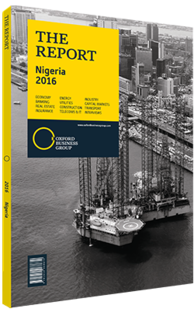Nigeria focuses on encouraging banks to diversify lending
Both the government and the Central Bank of Nigeria (CBN) have identified increased private sector lending as a priority, which has been made all the more urgent by a pressing need to stimulate the economy. As a result, the CBN has employed its monetary and regulatory tools to increase liquidity in the system and shore up banks’ balance sheets in the hope that lenders will increase lending in the real economy, especially outside of the oil and gas sector.
Monetary Policy
In an effort to inject more money into the lending system, the CBN lowered the cash reserve ratio (CRR) from 30% to 25% in October 2015. The next month, citing concerns that the lower CRR had not sufficiently improved credit delivery or employment in sensitive areas of the economy, the CBN further reduced the CRR to 20%. While the regulator did not officially make increased lending a requirement for banks to be able to take advantage of the lower ratio, the CBN adopted a policy of “moral suasion” to encourage banks to do so.
However, Godwin Emefiele, governor of the CBN, subsequently suggested in numerous statements to the press that the central bank would not in fact release the liquidity related to the reduction of the CRR until banks agreed to increase lending to targeted sectors. Observing heightened activity in the interbank market and lacklustre lending growth at the start of 2016, however, the regulator admitted that previous efforts to reflate the economy had not elicited the required response, and reversed course by raising the CRR to 22.5% in March 2016.
Risky Business
While this change has still opened up additional liquidity, there are a number of challenges that banks need to confront before private sector credit can increase significantly. For example, with low oil prices, capital controls and rising inflation, there are a number of risks facing potential borrowers, as evidenced by the rise in NPLs, particularly in the energy sector. This, coupled with regulatory changes, has encouraged banks to hoard capital. Muyiwa Oni, banking sector analyst for Stanbic IBTC notes that “banks are far more cautious and the compliance departments are much more important”.
Solutions
Nonetheless, there are signs that progress is being made in boosting lending. Heritage Bank, for example, which finalised the purchase of Enterprise Bank in 2015, aims to quadruple its lending to small and medium-sized enterprises (SMEs). According to the bank, it has lent nearly N25bn ($78.9m, at the time of printing) to SMEs since 2012 and expects to bring that figure to N100bn ($315.7m) before 2017. The CBN has also put in place programmes to reduce risk in providing credit to SMEs, albeit with mixed results. One such program, the Micro, Small and Medium Enterprises Development Fund, was launched in 2013 and subsidises interest rates, capping them at 9% for loans up to N50m ($157,850) in value. The N220bn (694.5m) fund was set up to allow 60% of its capital to be made available for woman-owned businesses and 10% for start-ups. However, deployment of capital has been slow, and by December 2015 only 30% of it had been disbursed.
In addition, lending to SMEs could allow banks to increase their market share. As Chidinima Lawanson, CEO of Enhancing Financial Innovation and Access, told OBG, “Deposit money banks have realised that there are many unbanked SMEs, making it an area where customers can be converted in large numbers.” Despite persistent hurdles throughout the economy, many banks are looking to expand their portfolios. By leveraging government programmes and the emerging credit monitoring industry, banks are slowly identifying new opportunities within the SME space. This was evidenced in 2016 by Diamond Bank, which partnered with Microsoft to provide SMEs with access to mobile point-of-sale terminals, and Stanbic IBTC, which unveiled a multi-channel virtual business platform for SMEs called SME BizDirect.
You have reached the limit of premium articles you can view for free.
Choose from the options below to purchase print or digital editions of our Reports. You can also purchase a website subscription giving you unlimited access to all of our Reports online for 12 months.
If you have already purchased this Report or have a website subscription, please login to continue.

